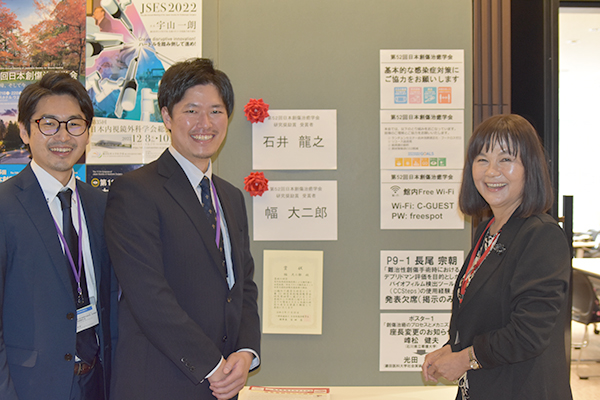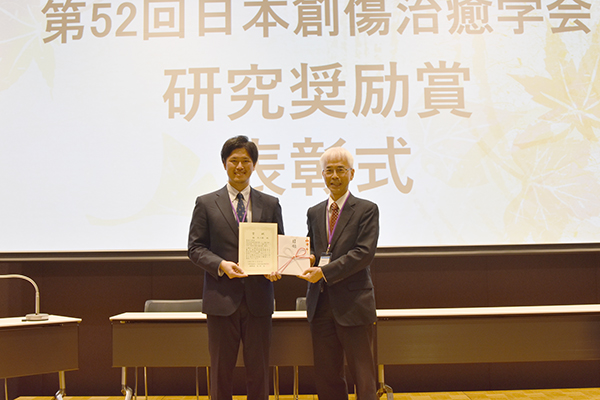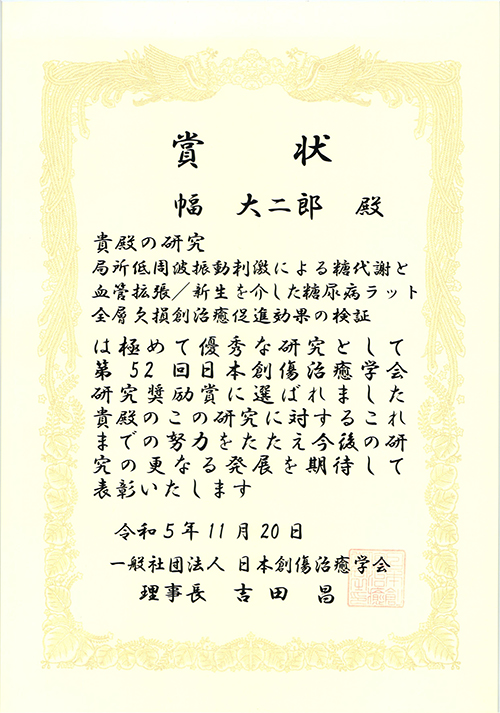Mr. Daijiro Haba, a third-year Ph.D. physical therapist, pursuing research at the Department of Gerontological Nursing/Wound Care Management, The University of Tokyo, has received a research award at the 52nd Annual Meeting of the Japanese Society for Wound Healing for the presentation titled “Local low-frequency vibration accelerates wound healing of full-thickness wounds in a diabetic rat model.”
Mr. Haba is pursuing his interdisciplinary research along with the concept of reverse translational research methods in Bioengineering Nursing. Mr. Haba’s research aims to develop an intelligent vibrational dressing for promoting wound healing of diabetic foot ulcers by improving glucose uptake and blood flow at the wound site and autonomously optimizing vibration intensity according to individual insulin resistance and vasodilatory capacity by artificial intelligence. The awarded presentation provided a foundation for developing a new self-care device and showed the potential of vibration therapy for healing diabetic foot ulcers.
“I am very honored to receive this prestigious award. The effects of local low-frequency vibration on promoting wound healing in pressure injuries are known; however, it has been difficult to extrapolate the concept to other hard-to-heal wounds than pressure injuries because the wound healing process in diabetic foot ulcers by low-frequency vibration and optimal settings for healing is unknown,” said Mr. Haba.
Mr. Haba’s research aims to develop a new and unprecedented self-care device to support independent living that promotes wound healing and enables personalized and autonomous wound care in a non-constrained and non-invasive manner to realize next-generation self-care. Mr. Haba reported their study to be the first to demonstrate the effect of local low-frequency vibration on promoting non-insulin-mediated glucose uptake, also known as AMPK-mediated glucose uptake, and wound healing in diabetic wounds. They could discover optimal vibration settings and showed the new strategy to promote the healing of diabetic wounds.
“I hope to provide innovative wound care and develop a new self-care device using low-frequency vibration, and we would like to commercialize this self-care device through industry-academia collaboration in the future,” said Mr. Haba




